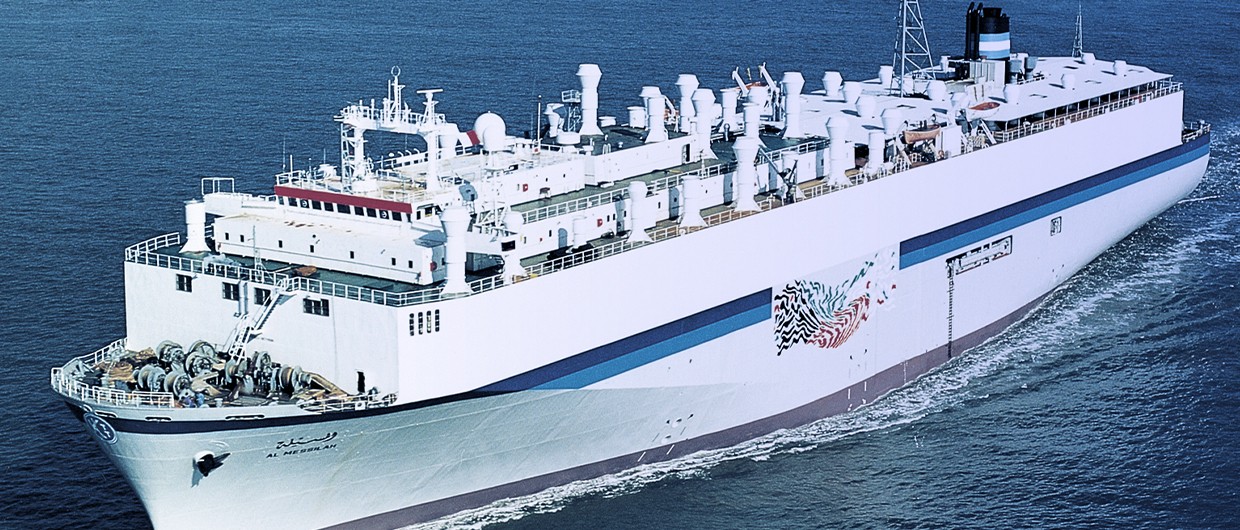Livestock Carriers
The construction of livestock carriers requires highly complex engineering skills and a creative flair. In addition to the shipbuilding process itself, attention must also be paid to other aspects, such as the correct and proper accommodation of animals at sea (mostly sheep and cows), the cleaning and maintenance of stalls, and the supply of food, water and fresh air. And highly durable materials are needed to handle the faeces and humid conditions on board.
MEYER WERFT has remodelled and delivered 27 cattle transport vessels throughout its history – our shipyard has long been regarded as a global market leader.
One example is the remodelling of the Norwegian tanker Erdiver into a livestock carrier. As the 244-metre-long ship was too big to navigate along the River
Ems to Papenburg, MEYER WERFT cooperated with a shipyard in Bremen. Our engineers designed a 110-metre-long, 36-metre-wide and 18-metre-high sheep shed with non-slip decks where the livestock even had a steady footing at sea, as well as an automated food and water supply, a urine drainage system and ventilation facilities that ensure the air is changed 20 times an hour.
Once the ship had been remodelled, it began to transport sheep from Australia to several neighbouring states in the Persian Gulf under the new name Al Shuwaikh. Its storage space roughly equated to eight football pitches and could accommodate up to 125,000 animals, making Al Shuwaikh the world’s largest livestock transport vessel at the time.
